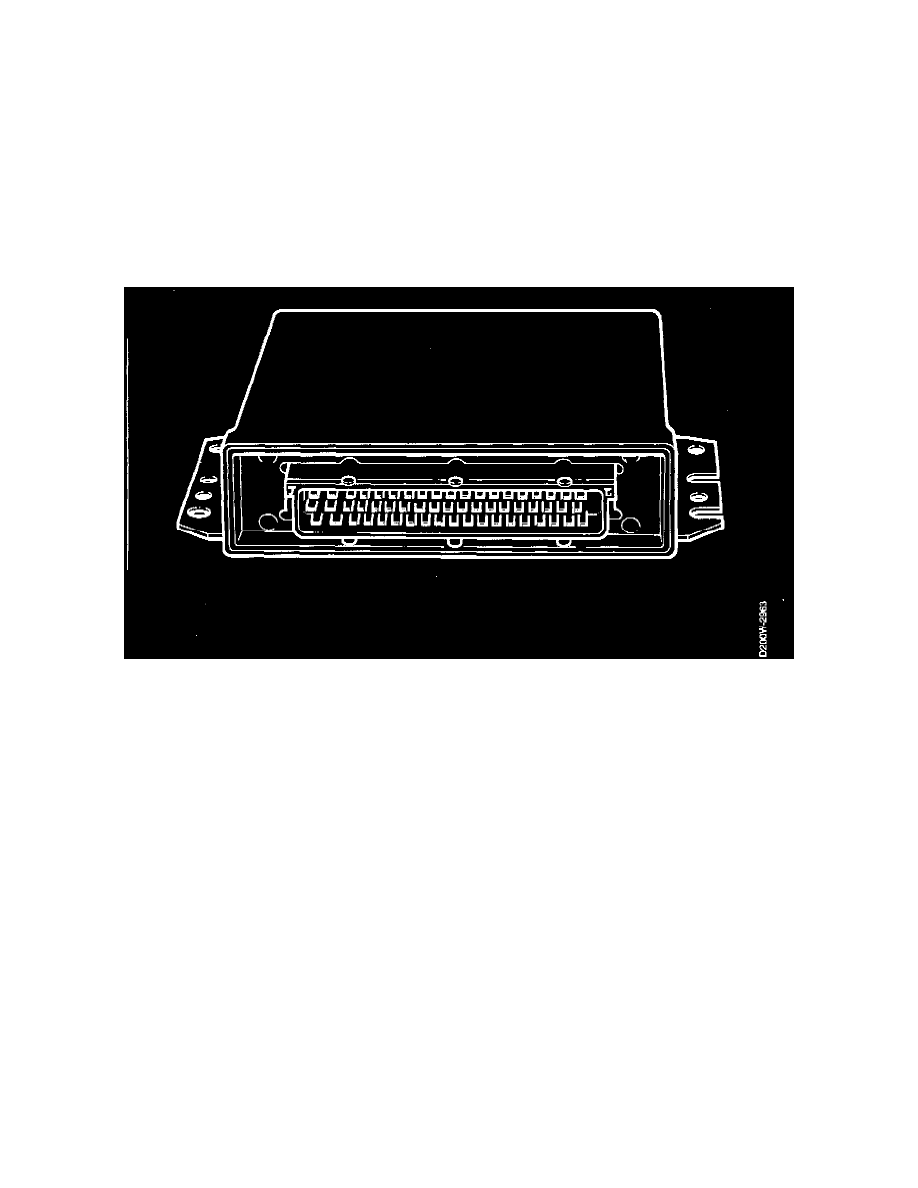9000 Hatchback L4-2290cc 2.3L DOHC Turbo EFI (1994)

-
fuel injection (which is sequential)
-
boost pressure (by means of a solenoid valve)
The Trionic control module has a 70-pin connector and is located in front of the bulkhead wall on the left-hand side. On removal of the power
train, the control module connector and cable are withdrawn through the bulkhead panel.
The control module has a 32-bit processor which can perform 2 million calculations per second.
A number of sensors supply the control module with information. The control module processes this information using matrices which have been
stored in it after optimization of engine performance. Examples of such important matrices are ignition timing matrices, fuel matrices and boost
pressure matrices.
The control module may be damaged by electrostatic discharges or shorting of any of its outputs. Great care must therefore be taken when
handling it, such as when carrying out fault diagnosis with a BOB, for instance.
The electronic control module is continuously supplied with +30 voltage and loses adapted values and diagnostic trouble codes stored in its
memory if this voltage disappears.
The control module is adapted for a voltage of between 8 and 16 V when the car is being driven.
Switching on the ignition activates the control module and causes pre-injection to take place under certain conditions. The control module then
waits for pulses from the crankshaft position sensor.
The main measured quantity for fuel injection comes from the manifold absolute pressure sensor.
There are substitute functions for all sensors apart from the crankshaft position sensor.
When the ignition is switched off, all sensors that are supplied with 5 V remain activated for a further 15 minutes. During this period it is also
possible to carry out Scan Tool diagnostics. Global adaptation of the main fuel matrix takes place at the end of this 15-minute period and only the
memory is then activated.
Adaptation is important for performance, driveability, fuel consumption and emission control. The control module must therefore never be
removed or de-energized unnecessarily.
Important: Every engine version has a special control module. Fitting the wrong control module will give rise to driveablity problems or cause
damage to the power train.
